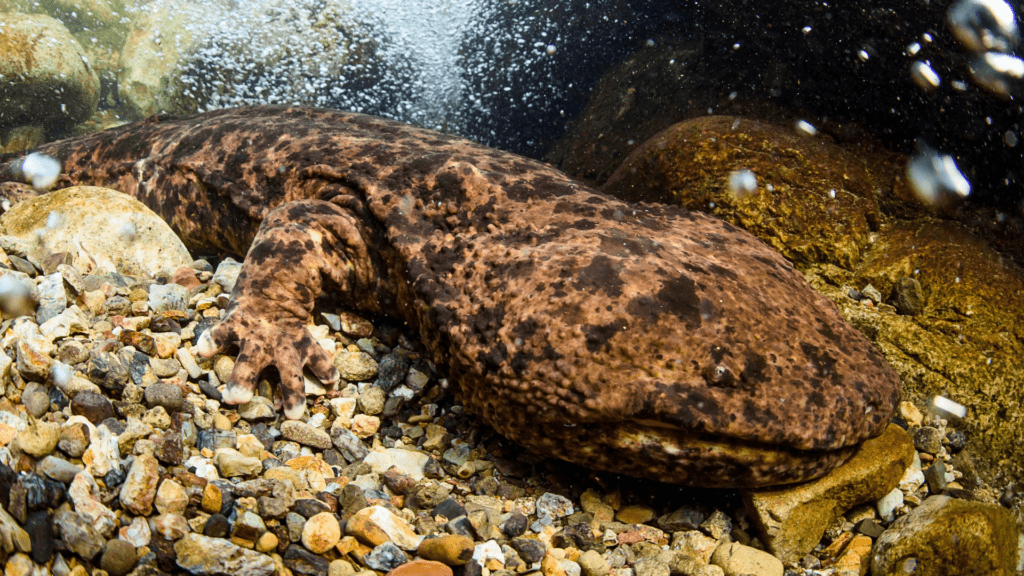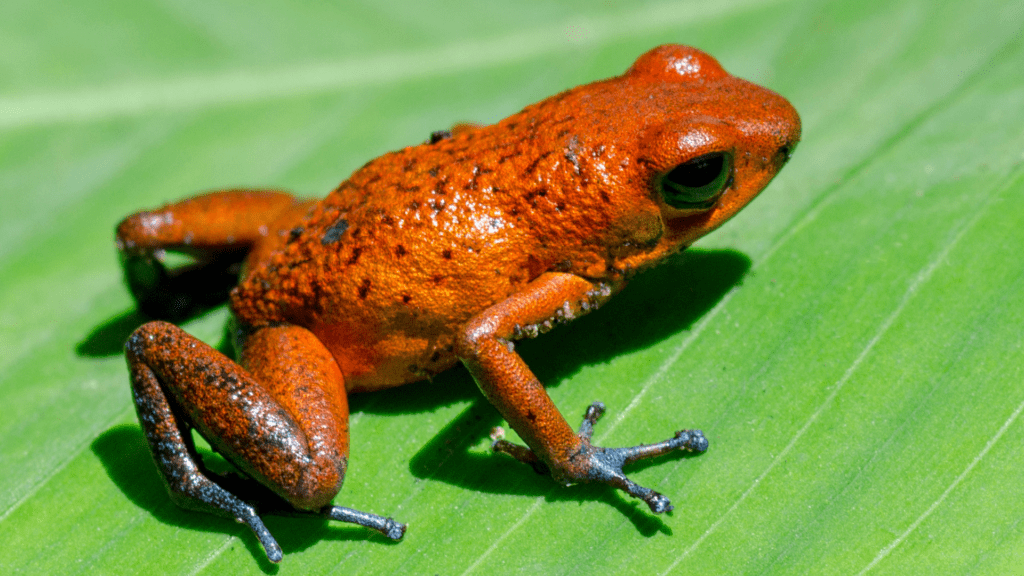The Jefferson Salamander (Ambystoma jeffersonianum) is a fascinating mole salamander native to North America. Known for its unique characteristics and involvement in a hybrid complex with the Blue-spotted Salamander and Small-mouthed Salamander, this article provides detailed information about the Jefferson Salamander, including its description, habitat, behavior, reproduction, and conservation status.
Scientific Classification of the Jefferson Salamander
- Kingdom: Animalia
- Phylum: Chordata
- Class: Lissamphibia
- Order: Caudata
- Family: Ambystomatidae
- Genus: Ambystoma
- Scientific Name: Ambystoma jeffersonianum
Description of the Jefferson Salamander
The Jefferson Salamander (Ambystoma jeffersonianum) is a medium-sized amphibian known for its slender body and unique characteristics. This species is part of the mole salamander group and has several distinctive physical traits.
Size
Adults of the Jefferson Salamander typically grow to a length of 10–12 cm, although some individuals can reach up to 17 cm. Their small size allows them to move efficiently through their forested habitat, navigating leaf litter and debris with ease.
Color
Jefferson Salamanders display a wide range of colors, typically ranging from gray to dark brown or brownish-gray. This coloration helps them blend seamlessly into their environment, protecting them from predators. They also have bluish spots on their sides, which are most prominent in younger individuals. The underside of the salamander is typically gray, providing a stark contrast to the darker upper body. This color pattern not only offers camouflage but also plays a role in their survival strategy.
Unique Features
One of the most recognizable features of the Jefferson Salamander is its flat, wide nose, which distinguishes it from other salamanders. Additionally, they have relatively long legs and a vertically flattened tail. These features help them move through both terrestrial and aquatic environments. The tail, in particular, aids in swimming and balancing while they navigate through their habitat.
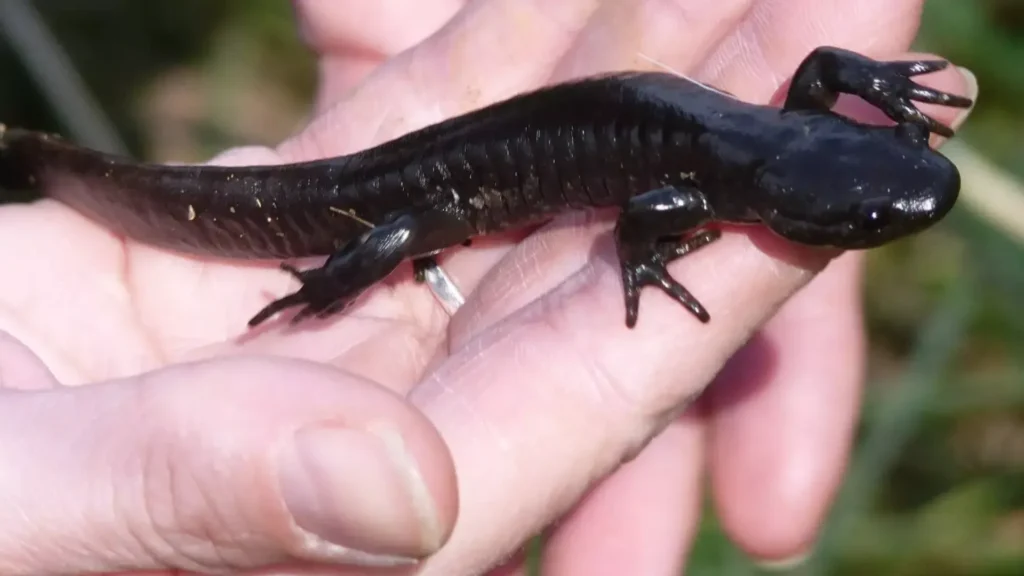
Habitat
The Jefferson Salamander thrives in specific habitats that provide the necessary conditions for its survival. Its range stretches across North America, and it is found in diverse environments that meet its needs.
Distribution in the United States
In the United States, the Jefferson Salamander is found in several states, including southern New England, Indiana, Kentucky, Virginia, and Illinois. These regions offer a variety of habitats, such as moist woodlands and well-drained upland forests, which are essential for the salamander’s lifestyle and breeding activities.
Distribution in Canada
In Canada, the Jefferson Salamander is primarily located in the Niagara Escarpment, southern Ontario, and the western part of Oak Ridges Moraine, north of Toronto. These locations are key habitats for the species, providing the cool, moist conditions that the salamander prefers. The forests and wetlands in these regions are critical for their migration and breeding behaviors.
Habitat Preferences
Jefferson Salamanders prefer undisturbed wild or semi-wild habitats that offer sufficient moisture and shelter. They are often found in areas with a combination of dense forests and nearby ponds or marshes, which serve as ideal breeding grounds. The preference for such habitats ensures that they have access to the humidity and safety they need for successful reproduction and survival.
Habitat and Behavior
The Jefferson Salamander has distinct preferences when it comes to its habitat, and its behavior is influenced by both environmental factors and biological needs. Understanding these aspects is crucial for comprehending how this species survives and interacts with its environment.
Habitat Preferences
Jefferson Salamanders thrive in moist, wooded environments, such as undisturbed forests and semi-wild woodlands. These habitats offer the ideal conditions for their survival, with plenty of leaf litter and debris where they can hide during the day. They are typically found in areas with well-drained upland forests and are closely associated with ponds and swamps that serve as their breeding grounds.
Activity Pattern
The Jefferson Salamander is partially nocturnal, meaning it is most active during the night, particularly at dawn and dusk. During the day, it often hides under leaf litter, fallen logs, or other debris to avoid predators and maintain moisture levels. These salamanders are known for their relatively slow movements, often remaining in the same general area for most of their lives.
Behavioral Traits
Known for their “stubbornness,” Jefferson Salamanders tend to stay within a relatively small area throughout their lives, rarely moving more than a mile from their birth site. This limited movement is characteristic of the species, which demonstrates a preference for familiar, safe habitats. Despite their sedentary nature, they do engage in seasonal migrations to breeding sites, which are essential for their reproduction.
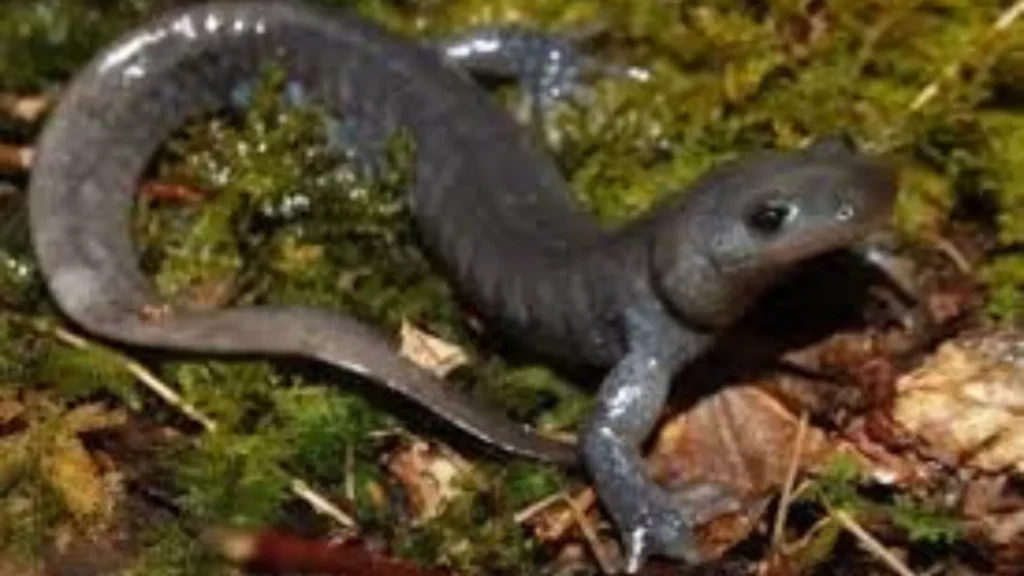
Diet
A key aspect of this species’ survival is its varied diet and lifestyle, which are closely linked to its environment and seasonal behavior. These dietary habits play a critical role in its growth and overall health.
The species is an opportunistic carnivore, feeding on a variety of invertebrates commonly found in its habitat. Its diet includes:
| Food Item | Description |
|---|---|
| Beetles | A major source of protein, readily available in its environment. |
| Worms | Commonly found in leaf litter, an important food source. |
| Spiders | A frequent prey, offering additional nutrients. |
| Snails | Present in the moist habitats, consumed by both juveniles and adults. |
| Insects | A broad range of insects forms part of its diet. |
| Centipedes | Found in the soil, these creatures provide essential nutrients. |
Larvae Diet
The larvae, in their aquatic stage, consume smaller organisms that provide them with the nutrients necessary for growth. These include:
| Food Item | Description |
|---|---|
| Zooplankton | Small, planktonic organisms that serve as a primary food source. |
| Aquatic Invertebrates | Various aquatic creatures that provide nourishment in early stages. |
Feeding Behavior
The species primarily forages during the night, utilizing its enhanced senses of touch and smell to hunt for food. Its slim body allows it to maneuver easily through undergrowth, where it hunts for prey. Though nocturnal, it may also feed during cloudy days when conditions are favorable
Threats and Conservation Status
The Jefferson Salamander faces a variety of environmental threats that have led to its decline in certain areas. Conservation efforts are crucial for the preservation of this species and its habitats.
Habitat Loss
One of the primary threats to this species is habitat loss. As urban areas expand and forests are cleared for development, the natural habitats of the Jefferson Salamander are increasingly destroyed. Wetlands and moist woodlands, which are essential for breeding and survival, are particularly vulnerable to destruction. This loss of habitat disrupts their migration patterns and reduces the available areas for breeding.
Road Mortality
Road mortality is another significant threat to the Jefferson Salamander. During their annual migration to breeding sites, many individuals are killed by vehicles as they cross roads. This is particularly dangerous as their migration routes often take them across roads that bisect their habitats. Efforts to mitigate road mortality have included the construction of wildlife crossings and barriers, but more comprehensive measures are needed.
Pollution
Pollution, both water and soil contamination, also poses a serious risk to the species. Degraded water quality affects their larvae and the food sources they rely on, while soil pollution can damage the habitat where they live. Chemical runoff from agricultural practices and industrial activities is a major source of contamination, which is harmful to their overall health.
Conservation Efforts
Efforts to protect the Jefferson Salamander focus on habitat preservation, pollution control, and raising awareness about their ecological importance. Conservation organizations are working to protect critical wetland and forest habitats, while local communities are being educated about the importance of reducing road mortality and minimizing pollution. Additionally, special attention is given to breeding sites, with some regions implementing seasonal road closures to protect migrating salamanders
Reproduction and Life Cycle
The reproductive process of this species is particularly unique and plays a key role in the survival and propagation of future generations. From breeding migration to the development of eggs and larvae, the species follows a fascinating life cycle.
Breeding Season
The breeding season for this species typically begins in early spring, with individuals migrating toward ponds and swamps for reproduction. During this time, males often engage in territorial disputes to secure the right to mate. The breeding season usually starts in late March or early April.
During migration, individuals travel over short distances, often moving toward the same breeding sites year after year. This seasonal migration is crucial for ensuring that the species can reproduce successfully.
Egg Development
Once the breeding takes place, females lay their eggs, attaching them to submerged vegetation. The eggs are incubated for a period ranging from 3 to 12 weeks, depending on environmental factors such as water temperature. This stage is critical for the larvae’s development, as they rely on the nutrients within the eggs to grow.
As the larvae develop, they remain in the aquatic environment for several months. They gradually undergo metamorphosis, transforming into terrestrial salamanders capable of surviving on land.
Life Cycle
The species experiences a slow and steady life cycle. After hatching, the larvae spend the first 2 to 3 months of their life in the water, where they feed on smaller aquatic organisms. They are then ready to undergo metamorphosis and transition to a terrestrial lifestyle.
Once fully developed, they reach sexual maturity in about 2 to 2.5 years. At this stage, the species is capable of reproducing and continuing its lifecycle. This gradual progression allows the species to adapt and thrive in its environment over time

Vocalization
Unlike many other amphibians, the Jefferson Salamander does not vocalize. Instead of relying on sounds to communicate, this species uses chemical signals and body language. These methods are especially important during mating, when individuals use subtle movements and scent signals to find potential mates.
Survival in Freezing Temperatures
An amazing adaptation of the Jefferson Salamander is its ability to survive brief exposure to freezing temperatures. This species can produce natural “antifreeze” proteins that protect their cells from the damage caused by ice formation. These proteins prevent water in their bodies from freezing, allowing them to survive during colder months or when exposed to freezing temperatures for short periods.
Longevity and Migration
Jefferson Salamanders are known for their relatively slow pace of life. Despite their modest migration distance, they have been observed traveling over 1 kilometer to reach their breeding sites. They also exhibit impressive longevity, with some individuals living for over a decade.
Parthenogenesis in Hybrid Offspring
One of the most intriguing facts about this species is its ability to reproduce through parthenogenesis in hybrid offspring. When Jefferson Salamanders mate with Blue-spotted Salamanders, the resulting offspring are often all-female and do not require males to reproduce. This reproductive strategy allows for a unique and efficient form of reproduction, ensuring that the species can continue even with a limited number of males.
Navigational Abilities
During migration, the Jefferson Salamander relies on natural navigation systems, such as the Earth’s magnetic field and the position of the moon. These cues help them find their way to breeding ponds, even in areas where they have never been before. This remarkable navigation ability is still being studied to understand how amphibians use environmental cues for orientation.
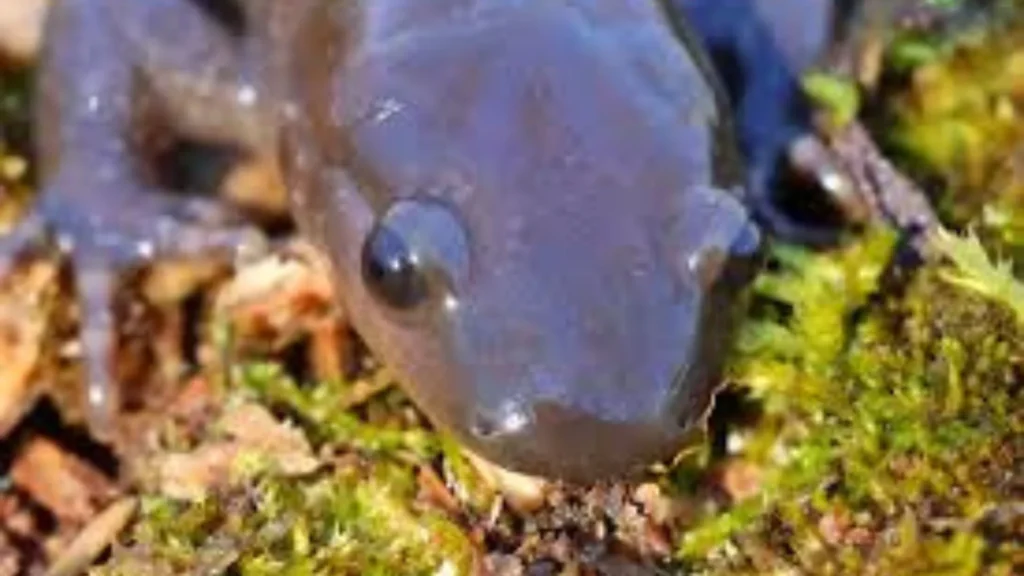
Interesting Facts
The Jefferson Salamander is a fascinating creature with several unique traits that make it stand out from other amphibians. From its survival mechanisms to its reproductive strategies, this species is full of interesting facts.
faq’s
What is the lifespan of a Jefferson Salamander in the wild?
Jefferson Salamanders typically live for 5–7 years in the wild, though some individuals may live longer depending on environmental conditions and habitat quality.
Are Jefferson Salamanders poisonous?
Yes, Jefferson Salamanders produce a toxic secretion from their skin glands, particularly at the base of their tail. This toxin helps deter predators.
Can Jefferson Salamanders regenerate lost body parts?
Yes, like many salamanders, Jefferson Salamanders can regenerate lost tails and other body parts as a defense mechanism against predators.
Why are Jefferson Salamanders considered indicator species?
Jefferson Salamanders are considered indicator species because their presence signals a healthy environment. Their decline often indicates pollution, habitat loss, or ecosystem imbalance.
How do Jefferson Salamanders survive winter?
Jefferson Salamanders hibernate by burrowing into the ground or hiding under leaf litter. However, 40–50% of individuals may die during hibernation due to extreme cold or unsuitable conditions.
What is the difference between Jefferson Salamanders and their hybrid offspring?
Hybrid offspring, resulting from breeding with Blue-spotted Salamanders, are typically smaller and more spotted than true Jefferson Salamanders. These hybrids are often triploid (having three sets of chromosomes).
How far do Jefferson Salamanders travel during migration?
Jefferson Salamanders are known to migrate up to a few hundred meters to reach breeding ponds. They usually migrate during or after heavy rainfall.
What are the main threats to Jefferson Salamander eggs and larvae?
Eggs and larvae are highly vulnerable to predation by aquatic invertebrates, fish, and other predators. Habitat destruction and pollution also threaten their survival.
Can Jefferson Salamanders be kept as pets?
While it is possible to keep Jefferson Salamanders in captivity, it is not recommended due to their threatened status and specific habitat requirements. Additionally, capturing them is illegal in many regions.
What conservation efforts are in place to protect Jefferson Salamanders?
Conservation efforts include protecting wetlands and forests, creating wildlife corridors, and raising public awareness. In Canada and the U.S., the species is legally protected under endangered species acts, making it illegal to harm, capture, or trade them.
